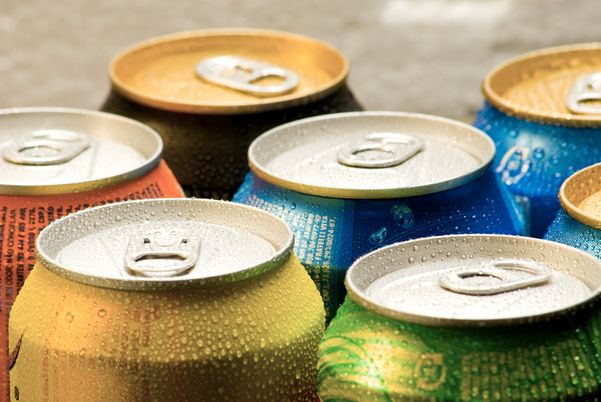Shares of energy-drinks expert Monster Beverage (MNST 0.32%) have absolutely crushed the market over the last decade. The stock has returned a thrilling 896% since the end of 2009, despite a few lulls along the way. Over the last two years, for example, Monster's shares traded almost exactly sideways, with a total gain of 1%.
So what's next for this exciting growth stock in the next decade? Let's have a look.

Image source: Author.
The big picture
The company then known as Hansen Natural posted full-year net sales of $1.14 billion in 2009. Energy drinks were still a relatively new and exciting concept, and the company's flagship brand of Monster Energy was stealing market share from arch-rival Red Bull on a regular basis. The company's net profit margins stood at 19% back then, resulting in full-year GAAP earnings of $2.21 per diluted share. Adjusted for two stock splits adding up to a 6-for-1 ratio along the way, that number works out to $0.37 per split-adjusted share.
A decade later, Monster has changed its name and replaced a ramshackle distribution system with a global partnership with Coca-Cola (KO +0.34%). As part of that deal, Monster now manages all of Coke's energy-drink products, while the soft-drink giant took over Hansen's non-energized juice and fruit-flavored sodas. Coca-Cola also holds a 17% ownership stake in Monster Beverage, giving Coke some representation on Monster's board of directors and plenty of incentive to maintain a solid partnership. When Monster wins, Coke gets to share some of its profits.
The new and improved Monster Beverage can now look back to trailing net sales of $4.11 billion and a juicier profit margin near 27%. Bottom-line earnings added up to $1.98 per diluted share over the last four quarters. In other words, revenues nearly quadrupled in the 2010s while earnings per share raced 435% higher. Those massive stock returns were indeed based on impressive business results.
Recent changes
Monster Beverage has encountered some new challenges in recent quarters. A brand new category of energy drinks entered the market in a big way last year, led by the workout-boosting drink known as Bang Energy from privately held company Vital Pharmaceuticals. Monster was quick to launch its own workout-energy drink, Reign Total Body Fuel. Vital Pharma and Monster have been slinging lawsuits at each other since the spring of 2019, with each company arguing that the other is using unfair business tactics of various forms.
In the third quarter of 2019, Reign held a 3% share of the total energy drink market compared to an 8% share for Bang. Both of these drinks stand far behind Monster Energy's dominant market share of 34%, but the workout drinks are growing quickly at the expense of traditional energy names such as Monster and Red Bull. Over the next few years, workout energy drinks will have carved out whatever long-term market share they can, most likely still far below the market size of ordinary energy drinks. Those lawsuits may set the tone for how that emerging sector evolves, either cementing Monster's market-leading stature even further or introducing a significant new name for the long term if the legal challenges go Vital Pharmaceuticals' way.
Meanwhile, Coca-Cola introduced a Coke-branded energy drink in dozens of international markets with plans to extend this new brand into the U.S. next year. Monster's management analyzed the international Coke Energy launches and came to the conclusion that the new drink doesn't pose much of a threat to Monster Energy or Reign.
Coca-Cola's incredible brand strength may make a sustainable product line out of this new idea, but it appears to be carving out its own mass-market niche rather than stealing share from any of the existing energy brands. Time will tell how that analysis stands up to market realities, of course.
At the same time, Monster is riding Coca-Cola's unmatched global-distribution platform into lots of brand-new geographical markets. Monster's third-quarter sales increased 40% year over year in Europe and 43% in the Asia Pacific market.
Management sees particularly strong long-term growth opportunities in the enormous consumer markets of India and China. Domestic sales accounted for 66% of total revenues in the third quarter, down from 72% in the year-ago quarter but still a clear-cut majority of Monster's overall business. The company hopes to change that through international distribution improvements, addressing a much larger global market in a more efficient and profitable way.
Looking ahead to the 2020s
Monster Beverage has transformed from a fast-growing minnow into a stable domestic giant with an eye on international growth. The overseas expansion effort will continue for the foreseeable future, and the company may come up with new product ideas to keep some sparkle in the U.S. market, as well.
The balance sheet is debt-free, while Monster's cash reserves nearly doubled over the last three years. I wouldn't be surprised to see this company introduce a modest dividend policy soon, sharing some of that cash with stockholders. Otherwise, Monster might be looking for opportunities to expand by acquisition. Either way, Monster's bulging cash coffers should be put to good use in the coming years.
This is a growing business with plenty of fuel for further gains. The next decade may not match the roughly 900% gains of the last 10 years, but Monster still looks like a fantastic investment, even at a lower-octane pace of growth.







